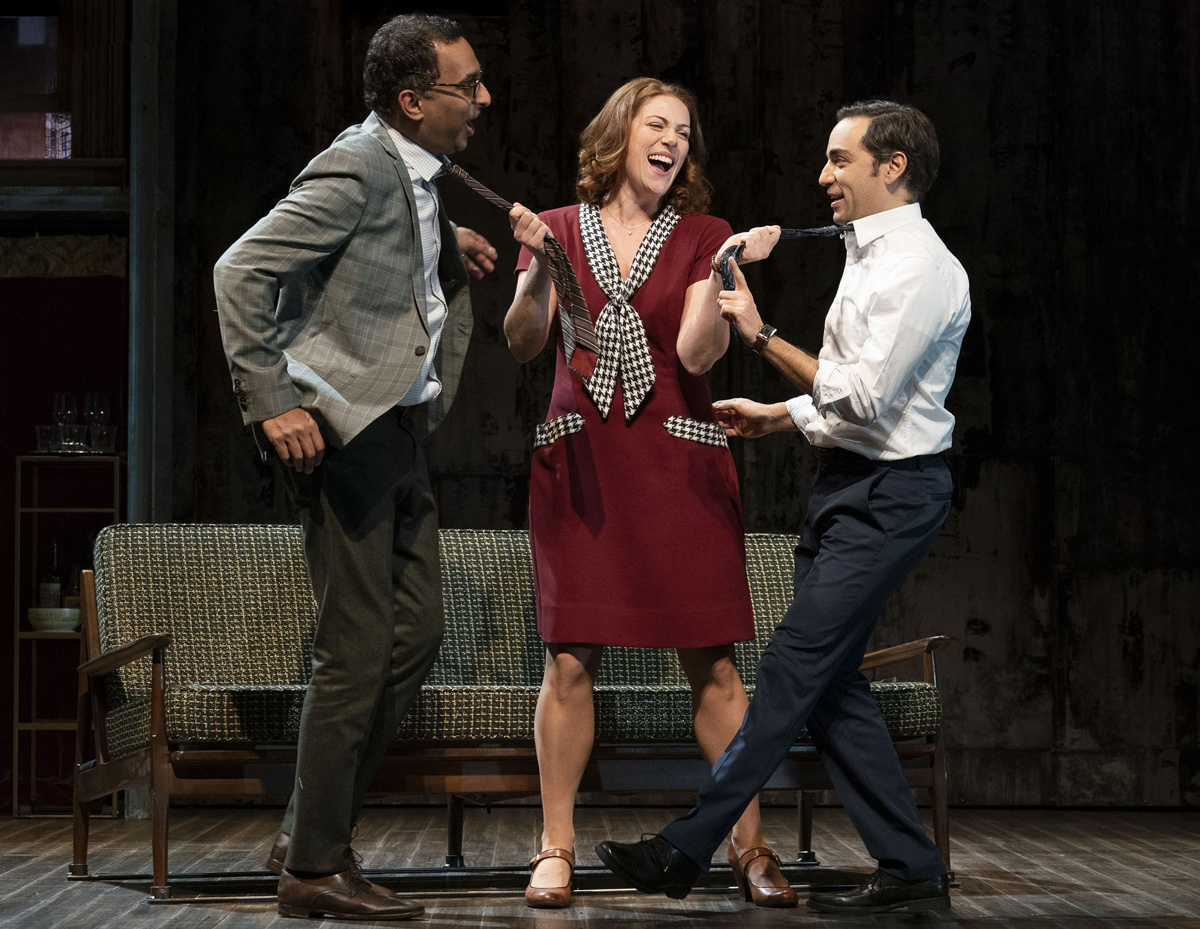Historical and Theatrical Context
Merrily We Roll Along, a groundbreaking musical by Stephen Sondheim and George Furth, holds a significant place in the annals of American musical theater. Debuting in 1981, it employed an innovative reverse chronological narrative, challenging conventional storytelling norms and leaving an indelible mark on the industry.
Plot, Characters, and Themes
The show revolves around Franklin Shepard, a successful Hollywood producer who grapples with the choices he made throughout his life. The story unfolds in reverse, beginning with Franklin at the height of his career and gradually peeling back the layers of his past relationships and aspirations.
- Characters: The musical features a diverse cast of characters, each representing a different aspect of Franklin’s life. Mary, his childhood sweetheart, symbolizes the innocence and idealism he lost along the way. Charley, his best friend, represents loyalty and the unwavering bonds of friendship. Gussie, his wife, embodies the sacrifices and compromises made in the pursuit of success.
- Themes: Merrily We Roll Along explores profound themes of regret, the passage of time, and the choices we make in life. It questions the sacrifices we make in pursuit of our dreams and the consequences of those decisions.
Original Production
The original Broadway production of Merrily We Roll Along opened to mixed reviews. Critics praised Sondheim’s music and lyrics but found the reverse chronology confusing and the characters unlikeable. Despite its initial reception, the show has gained a cult following over the years and is now considered a masterpiece of American musical theater.
Character Analysis and Relationships: Merrily We Roll Along

Merrily We Roll Along features a complex cast of characters whose relationships undergo significant transformations throughout the play. The main protagonists, Franklin Shepard, Mary Flynn, and Charley Kringas, each grapple with their own motivations and desires, and their interactions explore themes of friendship, love, and regret.
Franklin Shepard, Merrily we roll along
Franklin Shepard is a talented composer who sacrifices his artistic integrity for commercial success. As the play progresses, he becomes increasingly alienated from his friends and family, and his pursuit of wealth and fame ultimately leads to his downfall.
Mary Flynn
Mary Flynn is a playwright who is deeply in love with Franklin. She is willing to sacrifice her own career to support his, but she eventually comes to realize that he is not the man she thought he was. Mary’s journey is one of self-discovery and growth, as she learns to value her own worth and independence.
Charley Kringas
Charley Kringas is a lyricist who is Franklin’s best friend. He is a loyal and supportive friend, but he is also deeply hurt by Franklin’s betrayal. Charley’s journey is one of forgiveness and acceptance, as he learns to let go of the past and move on with his life.
Themes of Friendship, Love, and Regret
The relationships between Franklin, Mary, and Charley explore a range of themes, including friendship, love, and regret. The play shows how these relationships can be both a source of strength and a source of pain. It also explores the ways in which our choices can have a profound impact on our relationships with others.
Musical and Lyrical Analysis

Merrily We Roll Along is a musical with a complex and sophisticated score that contributes significantly to the storytelling and character development. The music is a blend of traditional Broadway show tunes and more modern, dissonant sounds, reflecting the show’s exploration of the complexities of life and relationships.
The lyrics are witty and insightful, providing a sharp commentary on the characters and their motivations. The show’s use of counterpoint and other musical techniques creates dramatic tension and emotional depth, adding to the overall impact of the production.
Use of Counterpoint
Counterpoint is a musical technique in which two or more independent melodies are played simultaneously. Merrily We Roll Along uses counterpoint to create a sense of tension and conflict between the characters.
For example, in the song “Franklin Shepard, Inc.,” the counterpoint between the melody sung by Franklin and the melody sung by the other characters represents the conflict between Franklin’s ambitions and the needs of his friends and family.
Use of Dissonance
Dissonance is a musical technique in which two or more notes that clash are played together. Merrily We Roll Along uses dissonance to create a sense of unease and discomfort.
For example, in the song “Growing Up,” the dissonance between the melody and the harmony represents the characters’ growing pains and disillusionment with life.
Use of Repetition
Repetition is a musical technique in which a melody or phrase is repeated multiple times. Merrily We Roll Along uses repetition to create a sense of urgency and inevitability.
For example, in the song “The Blob,” the repetition of the phrase “We’re all just blobs” represents the characters’ sense of powerlessness and insignificance.